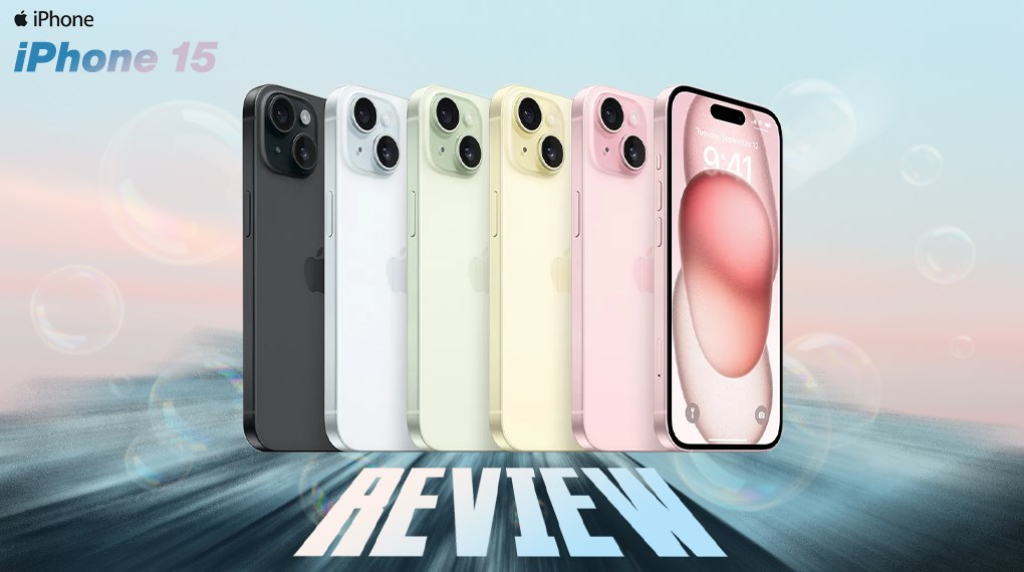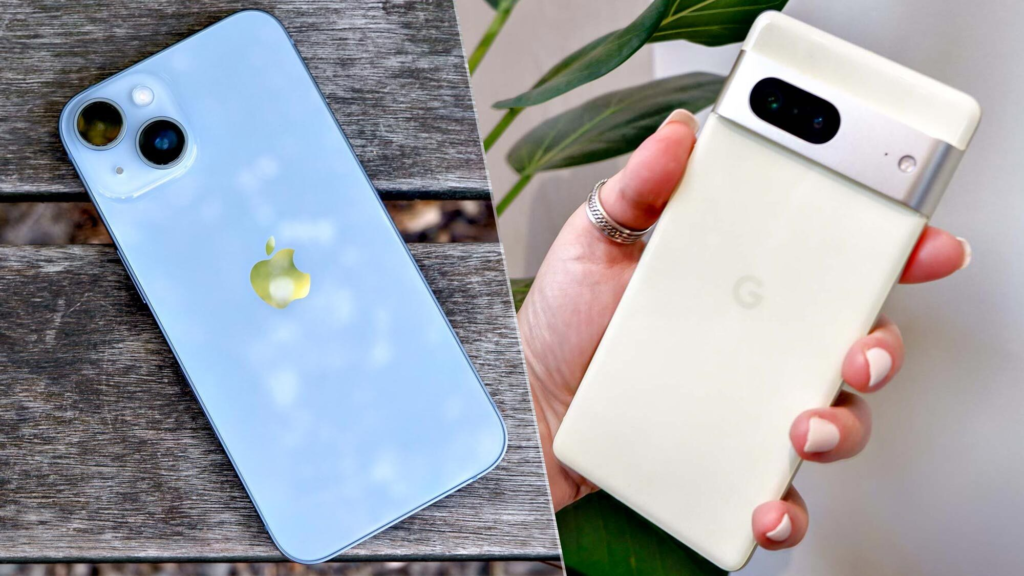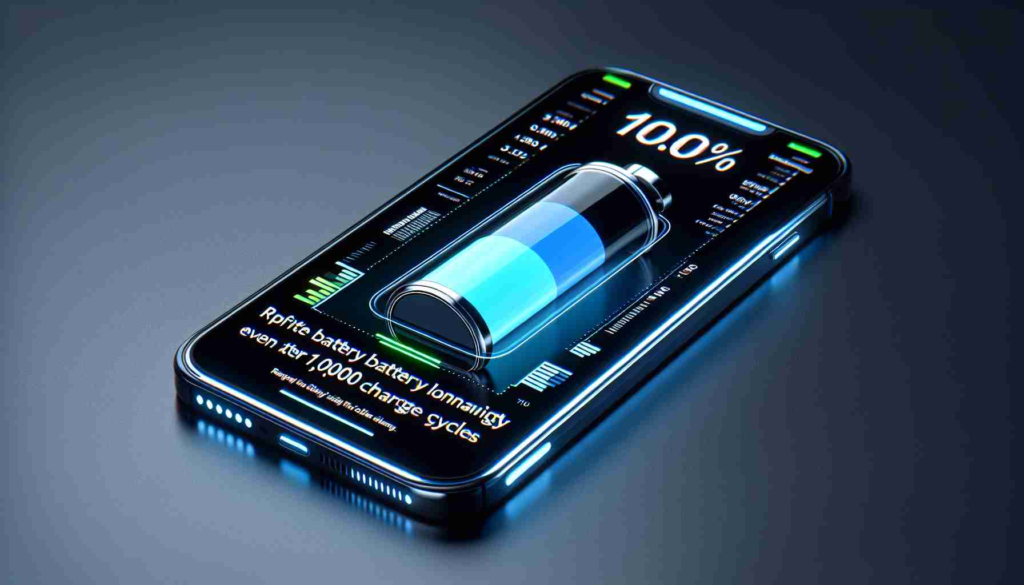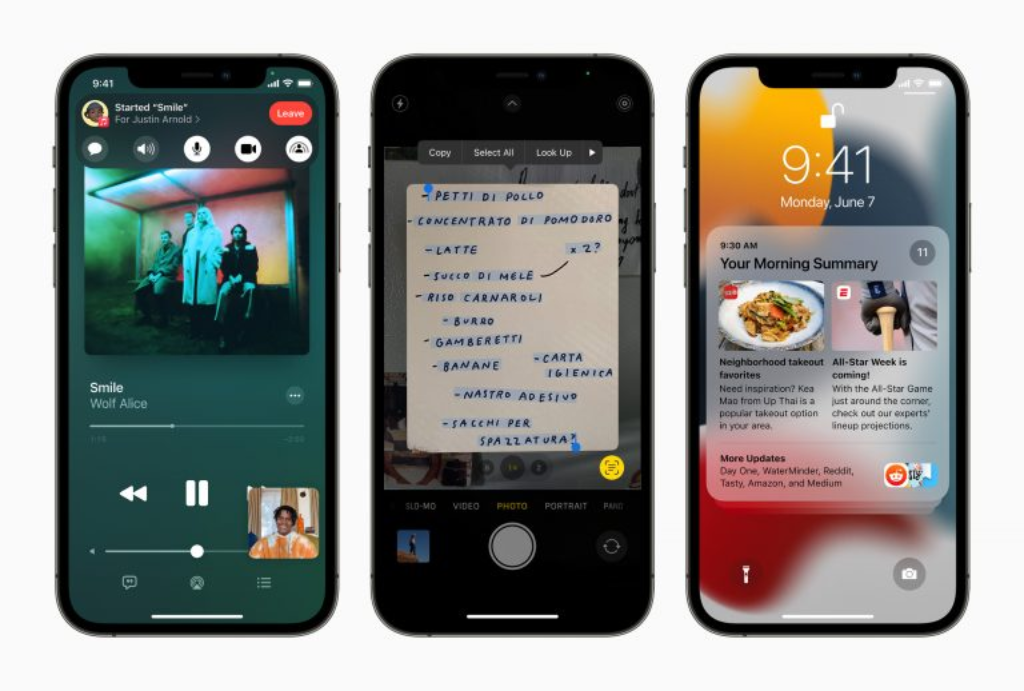YOUR CART
- No products in the cart.
Subtotal:
$0.00
BEST SELLING PRODUCTS

The iPhone 15, Apple’s latest addition to its iconic smartphone lineup, has garnered significant attention since its launch. Released in September 2023, the iPhone 15 continues the brand’s tradition of innovation and excellence, targeting tech enthusiasts, professionals, and loyal Apple users seeking upgraded features and superior performance. This iteration introduces several enhancements and notable changes compared to its predecessors.

Boasting a sleek design, the iPhone 15 features a durable ceramic shield front cover and aerospace-grade aluminum edges, ensuring both elegance and resilience. The 6.1-inch Super Retina XDR display delivers vibrant colors and sharp contrast, providing users with an unparalleled visual experience. Additionally, the introduction of ProMotion technology with adaptive refresh rates enhances both fluidity and responsiveness, particularly benefiting gaming enthusiasts and those who consume high-definition media.
Underneath its polished exterior, the iPhone 15 houses the powerful A16 Bionic chip, which significantly boosts efficiency, speed, and overall device performance. This chip, paired with advanced machine learning capabilities, enables smoother multitasking, faster app launches, and superior gaming performance. The iPhone 15 also comes with 6GB of RAM and various storage options, including 128GB, 256GB, and 512GB, catering to diverse user needs and preferences.
The camera system has undergone considerable upgrades as well. The rear dual-camera setup includes a 12MP wide and ultra-wide lens, both equipped with improved night mode and enhanced computational photography features. The front-facing TrueDepth camera, also upgraded to 12MP, offers users superior quality for selfies and FaceTime calls. Moreover, the Cinematic mode allows users to create professional-grade videos with dynamic focus transitions and real-time depth effect adjustments.
Apple remains committed to sustainability with the iPhone 15, incorporating recycled materials and adopting environmentally friendly manufacturing processes. With these enhancements, the iPhone 15 sets a high bar for competitors, making it a benchmark for devices within the same price range.
The iPhone 15 stands out in the competitive smartphone market with several key features and innovations that both entice new buyers and set it apart from its rivals. One of the most notable improvements is the advanced camera system. With a higher resolution sensor and smarter AI-driven features, the iPhone 15 offers superior photo and video quality, particularly in low-light conditions. The introduction of a periscope zoom lens also adds to the camera’s capabilities, allowing for greater optical zoom without compromising image quality.
Under the hood, the A16 Bionic chip powers the iPhone 15, boasting a significant leap in processing speed and efficiency over its predecessors. This upgrade ensures smoother multitasking, faster app launches, and improved gaming performance. Alongside the new chip, the enhanced battery life of the iPhone 15 ensures that users can enjoy extended usage without frequent charging, addressing a common pain point among smartphone users.
The iPhone 15 also benefits from numerous software enhancements in iOS 16, which introduces a range of new features and privacy settings. These improvements contribute to a more intuitive and secure user experience, something that continues to be a hallmark of Apple’s mobile operating system. Additionally, the iPhone 15 introduces new sensors, such as advanced health monitoring tools, which enhance the device’s capability to track and analyze various aspects of user well-being.
Design-wise, Apple has made subtle yet impactful tweaks to the iPhone 15, including a more refined and durable build. The new design not only looks premium but also improves ergonomics, making the device easier and more comfortable to hold. The inclusion of a sleek, edge-to-edge display with a higher refresh rate further elevates the visual experience, making every interaction feel more fluid and responsive.
Overall, the combination of these key features and innovations significantly enhances the user experience, making the iPhone 15 a compelling option in its price range. Whether it’s through improved performance, better battery life, or advanced camera capabilities, the iPhone 15 demonstrates why Apple continues to be a leader in the smartphone industry.

In the competitive landscape of high-end smartphones, the iPhone 15 and Samsung Galaxy S23 stand out as premium choices. Both devices, while distinct in their own right, offer cutting-edge features and capabilities that appeal to a broad spectrum of users.
First, let’s discuss display quality. The iPhone 15 boasts a Super Retina XDR display, renowned for its vibrant color accuracy and true-to-life visuals. On the other hand, the Samsung Galaxy S23 features an equally impressive Dynamic AMOLED 2X display, which offers deeper blacks and a higher peak brightness, making it ideal for outdoor use. Both displays support high refresh rates, ensuring a smooth visual experience, but the S23 slightly edges out with its superior HDR performance.

When it comes to camera capabilities, the iPhone 15 continues to excel with its advanced computational photography. The device features a multi-lens system that captures stunning photos and videos in various lighting conditions. Meanwhile, the Galaxy S23 also shines with its versatile camera setup, which includes a high-resolution sensor and enhanced optical zoom capabilities. Both phones offer excellent night photography, though the S23’s innovative image processing algorithms give it a slight advantage in low-light scenarios.
Battery life remains a critical factor for users. The iPhone 15 is powered by a highly efficient A16 Bionic chip, which ensures prolonged battery life even under heavy usage. Conversely, the Samsung Galaxy S23 is equipped with the powerful Snapdragon 8 Gen 2 processor, delivering robust performance and commendable energy efficiency. While both devices promise full-day usage, the Galaxy S23 typically offers a marginally longer battery life due to its optimized power management.
Performance-wise, comparing the A16 Bionic chip with the Snapdragon 8 Gen 2 reveals that both processors are state-of-the-art, delivering exceptional speed and multitasking capabilities. The iPhone 15, supported by iOS, offers seamless software experience and integration within the Apple ecosystem, characterized by its intuitive interface and regular updates. Alternatively, the Galaxy S23, running on the latest Android OS, provides a customizable user experience, with a plethora of features and greater flexibility.
Pros and cons for both devices are evident. The iPhone 15 excels in user-friendly software, ecosystem integration, and consistent performance. However, it might lack some customization options favored by tech enthusiasts. The Galaxy S23, while slightly surpassing in display and battery life, offers a more customizable Android experience but may not receive updates as swiftly as iOS devices.
When evaluating the iPhone 15 and the Google Pixel 7, several critical aspects come into focus—camera performance, software experience, build quality, unique features such as AI capabilities, user interface, and the price-to-performance ratio. These factors collectively establish the overall user experience and can guide potential buyers toward making an informed decision.

Starting with camera performance, both the iPhone 15 and Google Pixel 7 are at the forefront due to their advanced AI and computational photography capabilities. The iPhone 15 leverages its A16 Bionic chip, enabling features like Smart HDR and Night mode, which excel in low-light conditions. Conversely, the Google Pixel 7 incorporates Google’s machine learning algorithms, notably with features like Night Sight and Super Res Zoom, that deliver detailed and vibrant photos even under suboptimal lighting conditions. While both devices offer exceptional camera quality, the Pixel 7’s software-centric approach provides a slight advantage in post-processing outcomes.
In terms of software experience, the iPhone 15 comes with iOS 15, offering a seamless integration within the Apple ecosystem. Users benefit from synchronized operation across devices, enhanced privacy settings, and a consistently smooth experience. The Google Pixel 7, running on Android 12, distinguishes itself with exclusive features from Google, such as real-time translation and an intuitive design that emphasizes customizability and ease of use. Choice between these two will largely depend on user preference for either iOS or Android ecosystems.

Build quality is another pivotal aspect. The iPhone 15 features a sleek, aluminum chassis with Ceramic Shield front cover, showcasing Apple’s commitment to durability and premium feel. On the other hand, the Google Pixel 7 also emphasizes a robust build with Gorilla Glass Victus and a polished aluminum frame. Both smartphones exude a high-quality finish, making them equally appealing in design and durability.
Examining unique features, the Google Pixel 7 shines with its AI capabilities, notably the Google Assistant, which offers substantial enhancements in user interaction, productivity, and daily tasks. The Assistant is integrated deeply, enabling an efficient hands-free experience. The iPhone 15, while not lacking in AI functionalities, focuses on optimizing user experience with features like Siri and numerous Apple-exclusive applications.
The user interface experience varies distinctly between the two devices. The iPhone 15 offers a minimalistic and intuitive interface, staying true to Apple’s design philosophy of simplicity. The Pixel 7 provides a more flexible and customizable interface, resonating well with users who prefer personalization.
Finally, when considering the price-to-performance ratio, both devices offer competitive features for their price tags. The iPhone 15 and Google Pixel 7 are well-matched, but the choice might boil down to ecosystem preference, distinctive features, and specific user needs. Ultimately, both smartphones deliver robust performances that cater to a wide range of consumer expectations in the same price bracket.

When cуomparing the iPhone 15 with the OnePlus 11, several key elements come to light, each contributing to a comprehensive understanding of these two flagships. Firstly, the build quality of both devices exemplifies premium craftsmanship. The iPhone 15 boasts a sleek design with its durable ceramic shield and aluminum frame, while the OnePlus 11 impresses with its glass back and metal chassis, ensuring both phones offer a substantial, high-end feel.
The software experience is another focal point. The iPhone 15 runs on iOS, known for its seamless integration with the Apple ecosystem, user-friendly interface, and consistent updates. In contrast, the OnePlus 11 operates on OxygenOS, which sits atop Android. OxygenOS is celebrated for its near-stock Android experience, offering significant customization options and smooth performance. Users who prefer a more personalized interface might lean towards the OnePlus 11, whereas those seeking out-of-the-box simplicity and reliability might opt for the iPhone 15.
Performance is also a critical aspect. The iPhone 15 is equipped with Apple’s A16 Bionic chip, which delivers blazing-fast processing speeds and efficient power management. The OnePlus 11, on the other hand, is powered by the Qualcomm Snapdragon 8 Gen 1 chip, similarly ensuring top-tier performance and handling multitasking with ease. Both devices support 5G connectivity, enhancing their usability for demanding applications and future-proofing them for upcoming technological advances.
Unique features also differentiate these two contenders. The iPhone 15 integrates Face ID and a new camera system that offers enhanced low-light performance and advanced computational photography. Meanwhile, the OnePlus 11 includes a versatile triple-camera setup with Hasselblad color calibration and the HyperBoost gaming engine, which are compelling features for photography enthusiasts and gamers alike.
User customization options vary significantly between these models. iOS offers limited customization, prioritizing a consistent user experience across all devices. Conversely, OxygenOS provides extensive customization, from changing themes to tweaking system behaviors, appealing to users who enjoy tailoring their phone’s appearance and functionality.
Lastly, assessing overall value for money, both smartphones present strong arguments. The iPhone 15 may appeal to those heavily invested in Apple’s ecosystem, valuing seamless integration and long-term software support. The OnePlus 11, with its competitive pricing and robust feature set, might attract users looking for premium quality without the premium price. Deciding between the iPhone 15 and OnePlus 11 ultimately depends on individual priorities and preferences, ranging from software ecosystems to specific features and customizability.

The iPhone 15, much like its predecessors, places significant emphasis on battery longevity and charging efficiency. When compared to its closest rivals in the same price range, it becomes crucial to examine both the real-world battery performance and the manufacturer claims to offer a clear perspective.
One of the primary aspects of battery performance is endurance during everyday use. The iPhone 15 boasts a battery life that competes well against its counterparts. According to manufacturer claims, the iPhone 15 can deliver up to 18 hours of video playback and up to 65 hours of audio playback, suggesting a substantial improvement over earlier models. In real-world tests, these numbers hold up fairly well, with users experiencing a full day’s use under normal conditions.
Conversely, some of its closest rivals also offer impressive battery endurance. For example, the Samsung Galaxy S23 claims up to 20 hours of video playback, while the Google Pixel 7 promises up to 24 hours with its adaptive battery features. Each manufacturer’s approach to maximizing battery life reflects their design philosophies and optimization techniques.
Additionally, the charging speed of these devices is crucial for user convenience. The iPhone 15 supports 20W fast charging, which allows for a 50% charge in approximately 30 minutes. This is complemented by support for MagSafe wireless charging at 15W and Qi wireless charging at 7.5W. While efficient, some users may find these speeds relatively modest compared to competitors. For instance, the OnePlus 10 Pro offers 65W wired charging, which can fully charge the device in under 40 minutes, and 30W wireless charging, halving the waiting period compared to the iPhone 15.
Moreover, both the iPhone 15 and its rivals integrate advanced battery-saving features to prolong battery life. Apple’s iOS is renowned for its intelligent battery management, which dynamically adjusts performance and background activity to reduce power consumption. Remarks about similar features are seen in competitive models like the Adaptive Battery in Pixel 7, which learns user habits to prioritize essential apps and services.
In summary, while the iPhone 15 offers a commendable balance of battery life and charging speed, its competitors display noteworthy features that may tip the scale depending on user preferences and specific use cases. Understanding these differences can help consumers make more informed decisions based on their individual needs and usage patterns.

When discussing user experience, the iPhone 15 offers a holistic and immersive environment largely due to its seamless integration with the broader Apple ecosystem. One of the most substantial benefits of owning an iPhone 15 is its effortless connectivity with other Apple devices. Features such as Handoff, AirDrop, and Continuity Camera integrate iPhone 15 into an interconnected suite of devices including iPads, Macs, and Apple Watches, fostering a cohesive workflow and user experience.
Apple’s commitment to timely software updates further fortifies the user experience. iPhone 15 users gain immediate access to the latest iOS updates, ensuring enhanced security, performance optimizations, and the latest features as soon as they are released. This is often in stark contrast to Android counterparts, where software updates can be fragmented and delayed depending on the manufacturer and carrier.
The app ecosystem on the iPhone 15 is expansive and meticulously curated through the Apple App Store. This ensures that each application meets a high standard of quality, consistency, and security. Additionally, Apple’s exclusive services such as iCloud, Apple Music, and Apple Arcade provide synergistic benefits that enrich the user experience. iCloud seamlessly backs up and syncs data across all Apple devices, while Apple Music and Apple Arcade offer endless entertainment with a single subscription.
In comparison, Samsung’s ecosystem is comprehensive, particularly for those who invest in the broader Galaxy series of phones, tablets, and wearables. Samsung’s One UI also offers frequent updates, but they typically lag behind Apple’s release schedule. Google, with its Pixel devices, ensures a near-stock Android experience and swift updates, though they lack the same level of seamless hardware-to-hardware integration as Apple. Meanwhile, OnePlus provides a fluid and intuitive user experience, but its ecosystem lacks the depth and range seen in Apple’s offerings.
Through integrating hardware and software while providing expansive app ecosystems and services, the iPhone 15 delivers a user experience that is increasingly harder to parallel by its competitors. The consolidated ecosystem fosters an elaborate environment where devices and services coexist and communicate effortlessly, embodying a user-centric philosophy tailored to enhancing daily digital interactions.

After meticulously comparing the iPhone 15 with its close competitors in the same price bracket, it becomes apparent that each device has its unique strengths and compromises. For users with a penchant for photography, the iPhone 15 stands out with its sophisticated camera system, showcasing remarkable advancements in both hardware and software. Its proficiency in low-light conditions and vibrant color reproduction could transform even novice photographers into pros.
On the other hand, avid mobile gamers might find solace in the superior performance of the competing Android models. These alternatives, often powered by the latest Snapdragon processors, promise exceptional gaming experiences with higher refresh rates and optimized graphics. Gamers looking for prolonged battery life might also lean towards these options, as many android counterparts boast larger battery capacities.
For those centered around productivity and multitasking, devices with customizable software environments and expandable storage may prove more beneficial. The iPhone 15’s streamlined iOS ecosystem, coupled with seamless integration with other Apple devices, offers its own allure by promoting simplicity and efficiency. Simultaneously, the expandable storage and versatile functionalities of some Android phones provide an indisputable edge in adaptability.
Lastly, when evaluating overall value, it’s essential to consider the longevity of software updates, security features, and brand ecosystem compatibility. The iPhone 15 excels with its prolonged software support and robust security infrastructure, ensuring that your investment remains safeguarded and current for years. Meanwhile, other smartphones might attract users with additional features and competitive pricing, ensuring they too present exceptional value within their ecosystems.
In weighing these factors, your decision ultimately depends on prioritizing your daily needs and preferences. Whether it’s photography, gaming, productivity, or a balance of these elements, the iPhone 15 and its rivals each cater to distinct user demands, facilitating an informed and personalized purchase.
Hopefully after this article you have chosen a satisfactory product. If you need more about any product, comment below and we will write a new article for you!